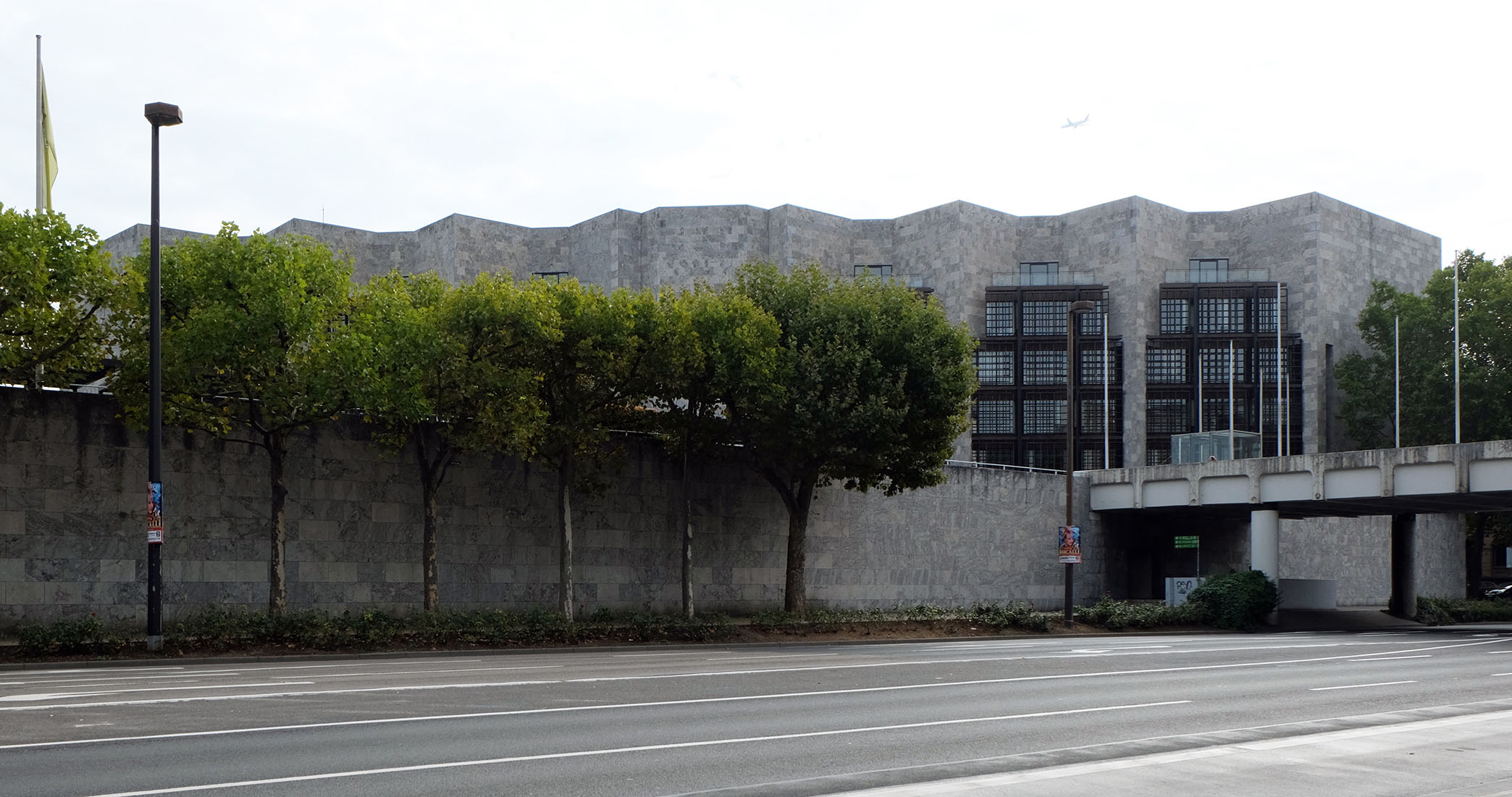 |
 |
 |
 |

Town Hall Mainz
Jockel-Fuchs-Platz 1 - Mainz
1968 - 1974
The
town hall of the city of Mainz is located on the banks of the river
Rhine, and was designed by Arne Jacobsen and Otto Weitling in
1968/1970.
The commission for this building was the result of a competition success. The building was constructed between 1970 and 1974. With the inauguration
of the new town hall, the city of Mainz received for the first time a proper town hall since 1462, when the city council had been dissolved.
As a consequence of this historic dissolution, the city had been governed exclusively by representatives of the archbishop and the electors.
In the 1930s and then after the Second World War different locations were evaluated for a new city hall.
The geometrical rigour of the plan and the monumentality of the Town Hall Mainz is quite remarkable and establishes a relationship with the work
of Louis I. Kahn. This project became step by step more conceptual during the design process, so that it was a challenge to ingegrate this scheme
in the environment. The building is a massive volume made of gray marble, which forms the backdrop to the highly abstract patterning of the shutters.
The town hall creates a ensemble of modernistic language together with the Brandzentrum, the Hilton Hotel and the Rheingoldhalle.
The cathedral of the city Mainz was the reference for the building height. A large raised square, which contains a car parking below, faces the river.
This platform creates a separation from the river bank as well as from the heavy traffic road on the opposite side. This square is accessible by stairs
and a bridge over the mentioned road. There are several entrances to the building. The main entrance is made by the square, but lowered in relation
to the platform. In the interior the monumental scale of the exterior is continued.
The building already aroused controversial discussions at the draft stage. Later the building was referred to as prison for officials in the vernacular language.
This nickname was of course a consequence of the extraordinary massiveness of the building. In fall 2012, the city authorities announced that the building,
which is highly affected in the meantime, is to be rehabilitated. In relation with the high costs, resistance against these intentions aroused soon.
At this time, the building was already in a poor condition due to inadequate maintenance. The courtyard and the stairs to the river bank were blocked,
on the facade were missing stones in some places and the roofs were partially leaking. In addition there was a need for energetic measures
to have the building at least to some extent up to date.
The commission for this building was the result of a competition success. The building was constructed between 1970 and 1974. With the inauguration
of the new town hall, the city of Mainz received for the first time a proper town hall since 1462, when the city council had been dissolved.
As a consequence of this historic dissolution, the city had been governed exclusively by representatives of the archbishop and the electors.
In the 1930s and then after the Second World War different locations were evaluated for a new city hall.
The geometrical rigour of the plan and the monumentality of the Town Hall Mainz is quite remarkable and establishes a relationship with the work
of Louis I. Kahn. This project became step by step more conceptual during the design process, so that it was a challenge to ingegrate this scheme
in the environment. The building is a massive volume made of gray marble, which forms the backdrop to the highly abstract patterning of the shutters.
The town hall creates a ensemble of modernistic language together with the Brandzentrum, the Hilton Hotel and the Rheingoldhalle.
The cathedral of the city Mainz was the reference for the building height. A large raised square, which contains a car parking below, faces the river.
This platform creates a separation from the river bank as well as from the heavy traffic road on the opposite side. This square is accessible by stairs
and a bridge over the mentioned road. There are several entrances to the building. The main entrance is made by the square, but lowered in relation
to the platform. In the interior the monumental scale of the exterior is continued.
The building already aroused controversial discussions at the draft stage. Later the building was referred to as prison for officials in the vernacular language.
This nickname was of course a consequence of the extraordinary massiveness of the building. In fall 2012, the city authorities announced that the building,
which is highly affected in the meantime, is to be rehabilitated. In relation with the high costs, resistance against these intentions aroused soon.
At this time, the building was already in a poor condition due to inadequate maintenance. The courtyard and the stairs to the river bank were blocked,
on the facade were missing stones in some places and the roofs were partially leaking. In addition there was a need for energetic measures
to have the building at least to some extent up to date.
